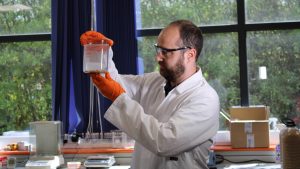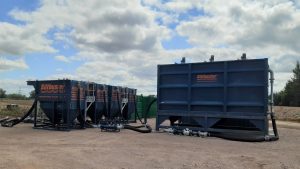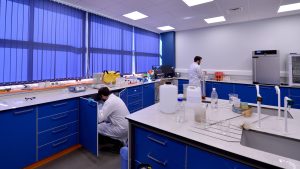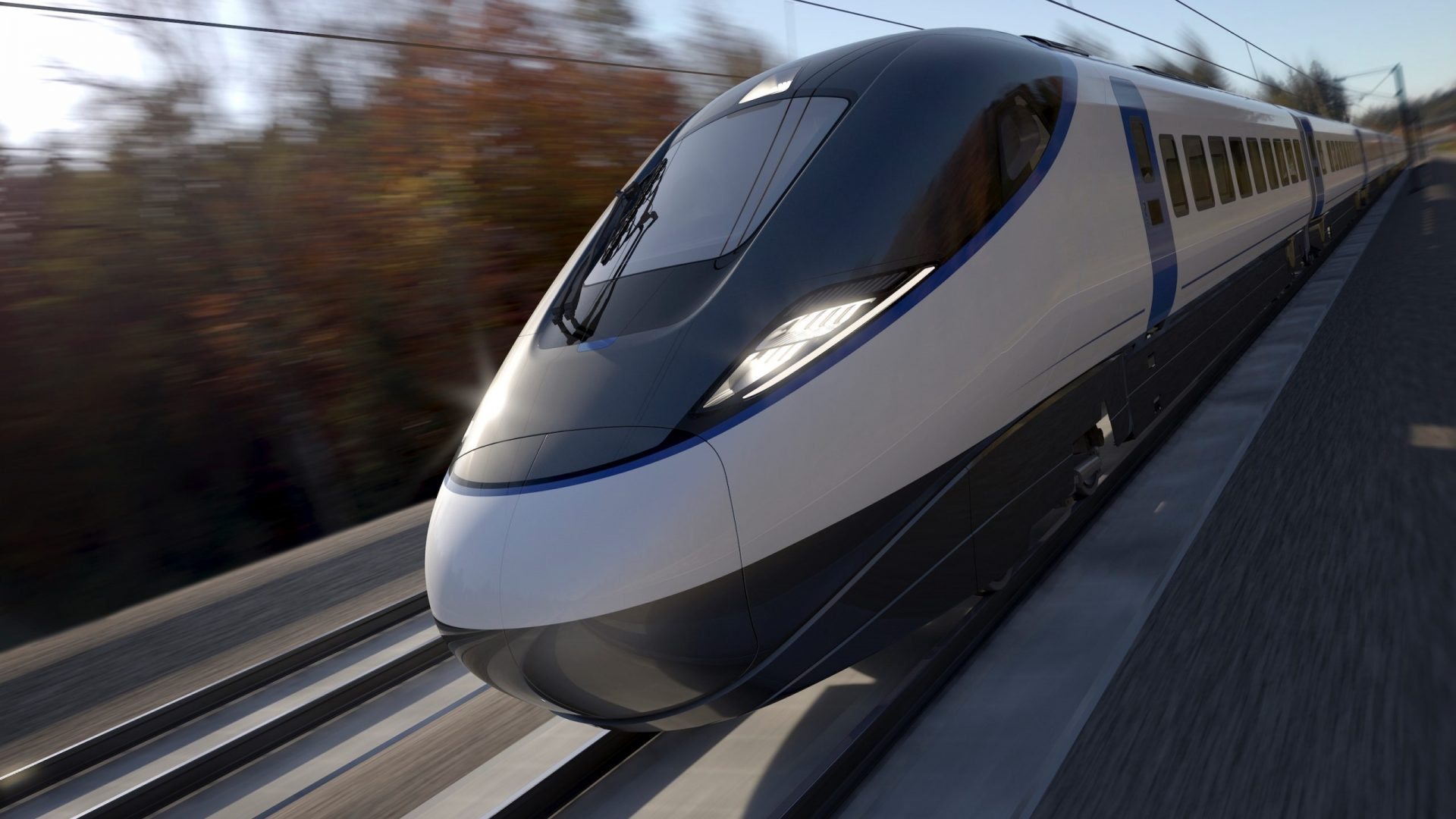The HS2 project will be one of the most environmentally responsible infrastructure projects in the UK. As a result the project has an incredibly varied programme of complex works and throughout Phase One (London to Birmingham & West Midlands), we have seen an equally varied range of water treatment requirements. From compact sites in London with very small areas available for treatment systems, tunnel boring machines, concrete pours, construction of station buildings and the treatment of large flows of water running off cleared sites, the varied range of our modular packaged environmental protection solutions has meant Siltbuster has been able to rise to the challenge and support HS2.
Across all sectors, there has been an acknowledgement of the need to protect the environment and the construction industry certainly has its part to play.
 When considering a treatment solution, we always take into account the source of the water, types and concentrations of contaminants, and the requirements of the final discharge location. It’s important to consider that when dealing with surface run-off water on construction sites, the majority of water is not some heavily polluted industrial effluent, but simply ground water infiltration or rainwater runoff, which has picked up suspended solids from the exposed soil. If the construction site was not there, in most cases this water would naturally flow to surface water drain or watercourse. However, once construction works start, this normally clean water flowing into rivers can become polluted. It is therefore important to treat at source, cleaning up the small volume of dirty water, rather than having to clean up the whole river down the line.
When considering a treatment solution, we always take into account the source of the water, types and concentrations of contaminants, and the requirements of the final discharge location. It’s important to consider that when dealing with surface run-off water on construction sites, the majority of water is not some heavily polluted industrial effluent, but simply ground water infiltration or rainwater runoff, which has picked up suspended solids from the exposed soil. If the construction site was not there, in most cases this water would naturally flow to surface water drain or watercourse. However, once construction works start, this normally clean water flowing into rivers can become polluted. It is therefore important to treat at source, cleaning up the small volume of dirty water, rather than having to clean up the whole river down the line.
How Water Treatment Has Been Different on HS2
The construction industry has historically been very reactive to its site water treatment responsibilities, and Siltbuster is set up to respond to this demanding industry. With the UK’s largest fleet of modular, packaged, rapidly deployable water treatment solutions, we are used to sending equipment out at days’ notice. However, working on HS2 has been a different experience. Since the work has been planned with consideration for the required water treatment solutions from the outset, our sales and engineering teams have been engaged early on and been given time to discuss the requirements for each unique site.
 The equipment deployed on sites is selected by considering the range of flows and contaminants in the water across the lifecycle of the construction site. This means that high pH water from concrete washout is captured and treated, trickles of dirty water turning into torrents during the winter months can’t overwhelm the properly sized treatment systems, and ultimately, construction is completed without harming the natural environment.
The equipment deployed on sites is selected by considering the range of flows and contaminants in the water across the lifecycle of the construction site. This means that high pH water from concrete washout is captured and treated, trickles of dirty water turning into torrents during the winter months can’t overwhelm the properly sized treatment systems, and ultimately, construction is completed without harming the natural environment.
The Range of Water Treatment Solutions Deployed Across HS2
For many sites in central London and others which have a sewer connection, the level of treatment required is determined by the relevant receiving water company. A consent can be issued providing permission to discharge the water to sewer, detailing the acceptable volumes of water and the concentration of contaminants. Since this water will travel through the sewerage network and find its way into a sewage treatment works for further treatment, consents are usually not as strict as when discharging to surface watercourse. The main consideration is the removal of rapidly settling solids such as stones, sand and grit, to prevent these accumulating and causing blockages. This can be achieved simply by using a settlement lagoon or a Siltbuster lamella settlement tank. If water treatment is not put in place, the resulting blockages can require costly maintenance work to clear and can cause localised flooding.
Where discharge to sewer is not possible, discharging to surface watercourse is most common but requires more time, planning and approvals. In England these discharges are regulated by the Environment Agency, who will evaluate the work being conducted, the receiving watercourse and produce a consent to discharge. Sites must consider the work being conducted and potential impact, putting in place mitigation to avoid polluting the environment. Short construction projects may have fewer considerations, for example a two month-long project discharging to a large river over winter. The river will be flowing significantly higher and dirtier (from runoff and agitation of silt) in winter than in summer, where the flow will be lower and the water naturally visibly cleaner. Since work on HS2 sites often spans multiple seasons, the treatment system must be capable of treating the highest volumes of most heavily contaminated water to a standard high enough not to impact the quality of the receiving watercourse at its cleanest. Because of this, treated water from a construction site over winter will sometimes be cleaner than the river the water is being discharged into.
The treatment solutions needed when discharging water to river are more varied than when discharging to sewer and typically involve multiple modular treatment stages. If we take a fairly typical site where the topsoil has been stripped, there are open excavations being dewatered and there are some newly poured concrete slabs, the water running off the site and being pumped out of excavations requires a number of different treatment stages. A modular packaged solution deployed in this example, to enable discharge to river, would typically involve multiple treatment stages including flow monitoring, pre-conditioning of the solids, pH neutralisation, a separation/settlement stage and then final treated water quality monitoring.
Assessing the Level of Treatment Required
 The in-house laboratory at Siltbuster not only provides characterisation of samples but can also conduct treatability trials and provide an indication of treated water quality achievable using different treatment methods. Trials using site specific wastewater samples can reliably identify the most appropriate treatment system and ensure that the best solution goes to site first time. Ongoing sampling during site attendance ensures that if conditions change, the operation of the equipment can be adjusted, or additional treatment modules deployed if required.
The in-house laboratory at Siltbuster not only provides characterisation of samples but can also conduct treatability trials and provide an indication of treated water quality achievable using different treatment methods. Trials using site specific wastewater samples can reliably identify the most appropriate treatment system and ensure that the best solution goes to site first time. Ongoing sampling during site attendance ensures that if conditions change, the operation of the equipment can be adjusted, or additional treatment modules deployed if required.
In Summary
Early supply chain engagement has allowed Siltbuster to support HS2 in delivering the works required, while still protecting the environment. The business continues to invest in the fleet, people and product development, to ensure we can react to both current and future environmental protection demands.



